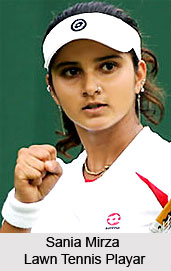 Tennikoit, also known as ring tennis, is an outdoor game in India, concentrated in Kerala, Karnataka, Tamil Nadu, Andhra Pradesh, Madhya Pradesh and Telangana. This game was mostly famous in 1960`s. This game is played on a tennis-style court with a net separating the two players of the game. Tennikoit is mainly popular in Germany, South Africa, Brazil, and the Subcontinent nations of India, Pakistan, and Bangladesh. Former MLC Mohan Joshi is the Chairman of Tennikoit Federation of India.
Tennikoit, also known as ring tennis, is an outdoor game in India, concentrated in Kerala, Karnataka, Tamil Nadu, Andhra Pradesh, Madhya Pradesh and Telangana. This game was mostly famous in 1960`s. This game is played on a tennis-style court with a net separating the two players of the game. Tennikoit is mainly popular in Germany, South Africa, Brazil, and the Subcontinent nations of India, Pakistan, and Bangladesh. Former MLC Mohan Joshi is the Chairman of Tennikoit Federation of India.
History of Tennikoit
This outdoor game was started in the early 1960s throughout the world. Originally, it was played by high school girls in the United States of America since the 1930s. But Tennikoit gained popularity after 40 years. Four decades since its inception, this outdoor game has risen from district levels to international levels with nearly 20 countries all over the world. In South India, this game gained much popularity.
Evolution of Tennikoit
Tennikoit is one of the outdoor sports which almost faced extinction. However the sport received timely concentration and it survived and flourished. Even though precise records are not available to document the place and date of birth of Tennikoit, it is largely believed that Southern part of India is its birthplace. In the urban and rural areas of Kerala, Karanataka, Tamil Nadu, Andhra Pradesh, Telangana, this type of game is now a favourite of children.
Players of Tennikoit
Tennikoit can be played with a minimum of two people (singles) up to a maximum of four people (doubles). The name "Tennikoit" is given to a circular ring made of rubber. A game of Tennikoit essentially involves the exchange of the tennikoit across the courts. The net between the two courts of Tennikoit acts as a barrier. A typical Tennikoit court essentially looks like a Badminton court in India. Each individual tries to score 21 points in order to be declared a winner. However, in order to be declared a winner, one has to maintain a minimum of two points lead over the opponent. If each of the players scores 21 points, then the winner is decided by tie-break. The match of Tennikoit is a set of 3 games. The players are not allowed to play in the other side of the court during service.
Court of Tennikoit
Tennikoit can be played indoors or outside. This variation of ring tennis can be played on any surface which includes red sand, clay and cement. The dimensions of the Tennikoit courts are the same for both Singles and Doubles. Their measure is 12.2 meters by 5.5 meters. A centre line divides the Tennikoit court into two equal courts. Each playing zone is 5.2 X 2.75 m. The height of the net that divides the court in another direction is 1.8 m. There are strict rules about the material to be used, the height of the pole, and the "antennas" are used to mark the limits of the sides of the net. The net height for the Sub-Junior division is 1.67 m. A timeout is allowed for 30 seconds per set for each team. A yellow card system is in place for any violation of this rule.
Rules of Tennikoit
In the rule book of Tennikoit, one needs to play 3 sets of game accruing 21 points. The winner of 2 sets wins the match. However, a time limit of 30 minute is in place per set. This means the server should win a point within nine rallies. Failing to do so will then result in a point for the opponent.
Services of Tennikoit
The game Tennikoit is started with a service, after that both need to have a service. The serving of the ball diagonally is a delivery to the other player. The first return can be anywhere. Each player takes 5 services in a row, regardless if that person has won the point or not. Like tennis, the service of Tennikoit changes half courts every time. All services should have an upward tendency. No one is allowed in the dead court. A koit hitting the antenna or sailing away should be called out, even if it did fall in the court. A koit is prohibited to enter the other side through the net. Both of the wobbling and shaking are considered faults to both the players who are playing 3 sets.
Popularity of Tennikoit
Tennikoit was initially a popular game amongst girls. But now the boys are also involved in this part. However, when the sport was taken to a qualified level, competition often attracted large crowds. The game conducts events for men, women and mixed doubles sections.
Rules of Tennikoit
Tennikoit Federation of India was established to maintain the guidelines. According to the Tennikoit Federation of India, there are 5,000 registered Tennikoit players and they have had 29 annual championships to date. About six countries took part in the first World Tennikoit Championships at Velammal International School of Panchetti, which is located in Chennai.

















